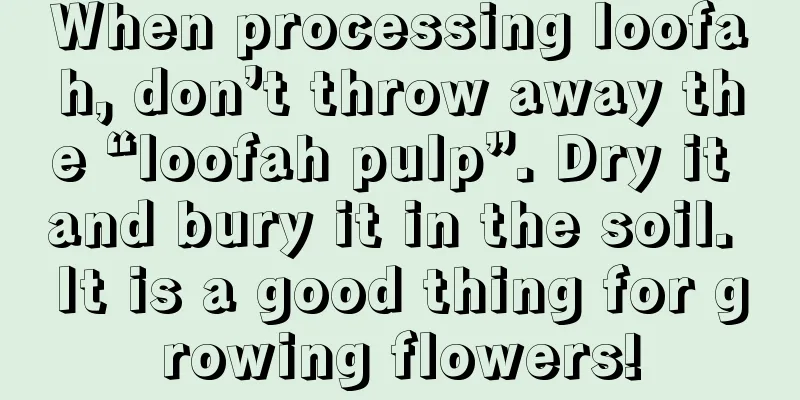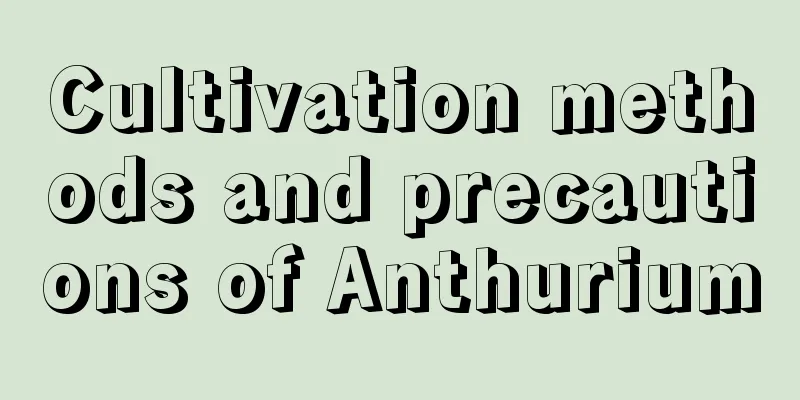When processing loofah, don’t throw away the “loofah pulp”. Dry it and bury it in the soil. It is a good thing for growing flowers!

|
I remembered that many friends may not know that there are such little things that are very convenient for growing flowers in life, so Huahua quickly shared it with everyone! Loofah sponge is very useful for growing flowers! Especially in winter, when the weather starts to get colder, the roots and outside of the plants need to be kept warm. To keep the outside warm, you can use plastic bags, etc., and to keep the inside warm, we can use loofah. The loofah pulp is the soil inside the loofah, so it is very natural and harmless. After we clean the surface of the loofah, the remaining loofah pulp can be cleaned and placed in the sun to dry. The reason why it can keep the plant warm is because there are densely packed mesh holes on the loofah pulp. Burying the loofah pulp in the soil and using it to grow flowers has two main benefits. The first benefit is that it can make the soil of the plants loose and breathable. The most taboo thing about the soil in winter is soil compaction, which will cause the roots of the plants to be suffocated. Even due to long-term lack of air permeability, the roots of the plants will rot. The second benefit is that it can keep plants warm. The various mesh holes on the loofah can act as a buffer near the roots of the plants. If the water we use in winter is too cold, the loofah can absorb the water first, store it for a period of time, and then provide nourishment to the roots. At that time, the water will not be too cold. There are two benefits of burying loofah pulp in the soil, and it has other very useful functions! After drying, if the sponge gourd flesh is relatively intact, we can use it to grow flowers directly. We can use the sponge gourd flesh as a flowerpot and put soft and fertile soil in it. It is also very good for growing small potted plants. Although the sponge gourd flesh is full of holes, it still has first-class water retention effect. In addition, the dried loofah pulp can be torn into pieces and used as a water-retaining material. After soaking it in water, it is just right for growing plants. Instead of throwing away the loofah pulp that we often eat at home, it’s better to use it to grow flowers! Does everyone know this method? Come and try it out now! Guaranteed not to be afraid of the cold in winter! |
Recommend
Narcissus growth environment conditions and characteristics
Narcissus growth environment conditions and requi...
Treatment methods for black orchid root rot
1. Treatment methods 1. If you find that the root...
Notes on flower cultivation: Fertilizer
16 nutrients needed for flower growth Carbon, hyd...
How to save seeds of Million Bells
Million Bells Seed Introduction Million bells hav...
Planting, cultivation and management techniques of bitter melon
Bitter melon has strong adaptability and is grown...
How to Grow Anthurium
1. Watering in time Anthurium is very afraid of d...
How many days does taro grow?
Taro belongs to the Araceae family. Tuberous stem...
What to do if the leaves of Kalanchoe are small
1. Temperature 1. One reason why its leaves are s...
How often should I water the poppy?
How often should I water the poppy? Poppy has a r...
What are the cultivation methods and precautions of chicken heart vine
Cultivation method of Millettia reticulata Millet...
How often should I water the night-blooming cereus?
How often should I water the night-blooming cereu...
What is the difference between planting technology and cultivation technology
1. What is the difference Under normal circumstan...
How to propagate daisies
The grafting method of daisy has high technical r...
How to grow Epiphyllum so that it blooms quickly
Epiphyllum flowering time Epiphyllum mainly bloom...
How to fertilize the fairy
Plants' need for fertilizer In general, this ...









